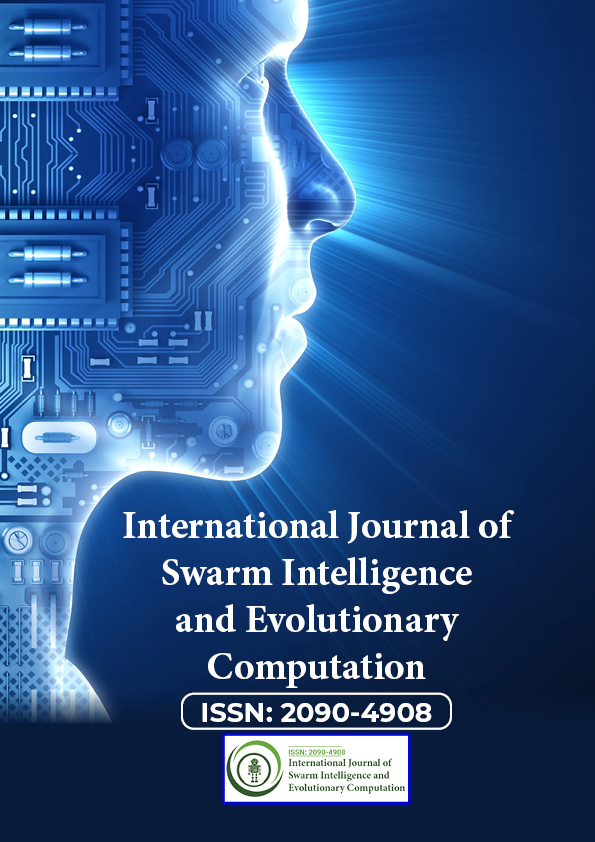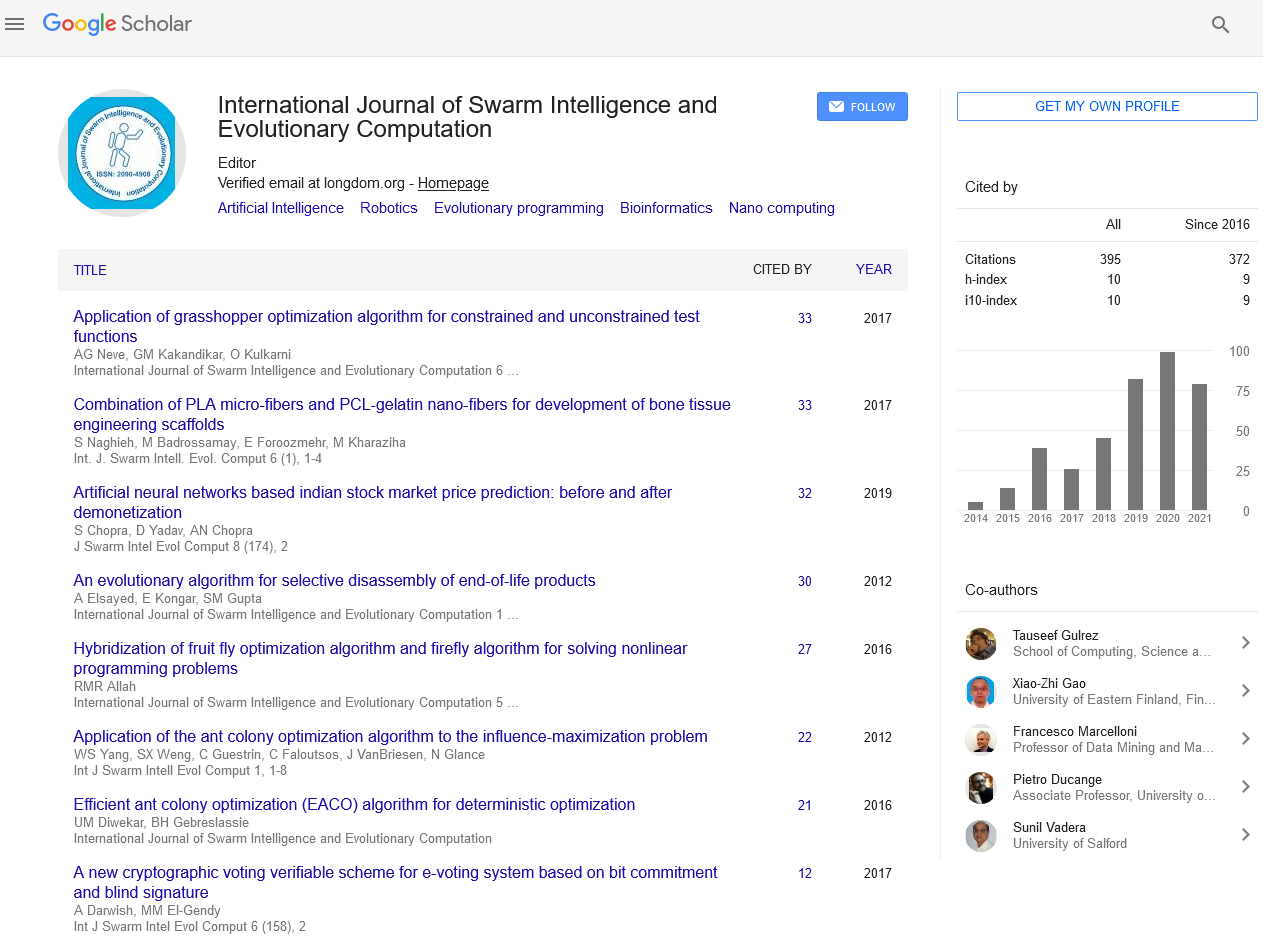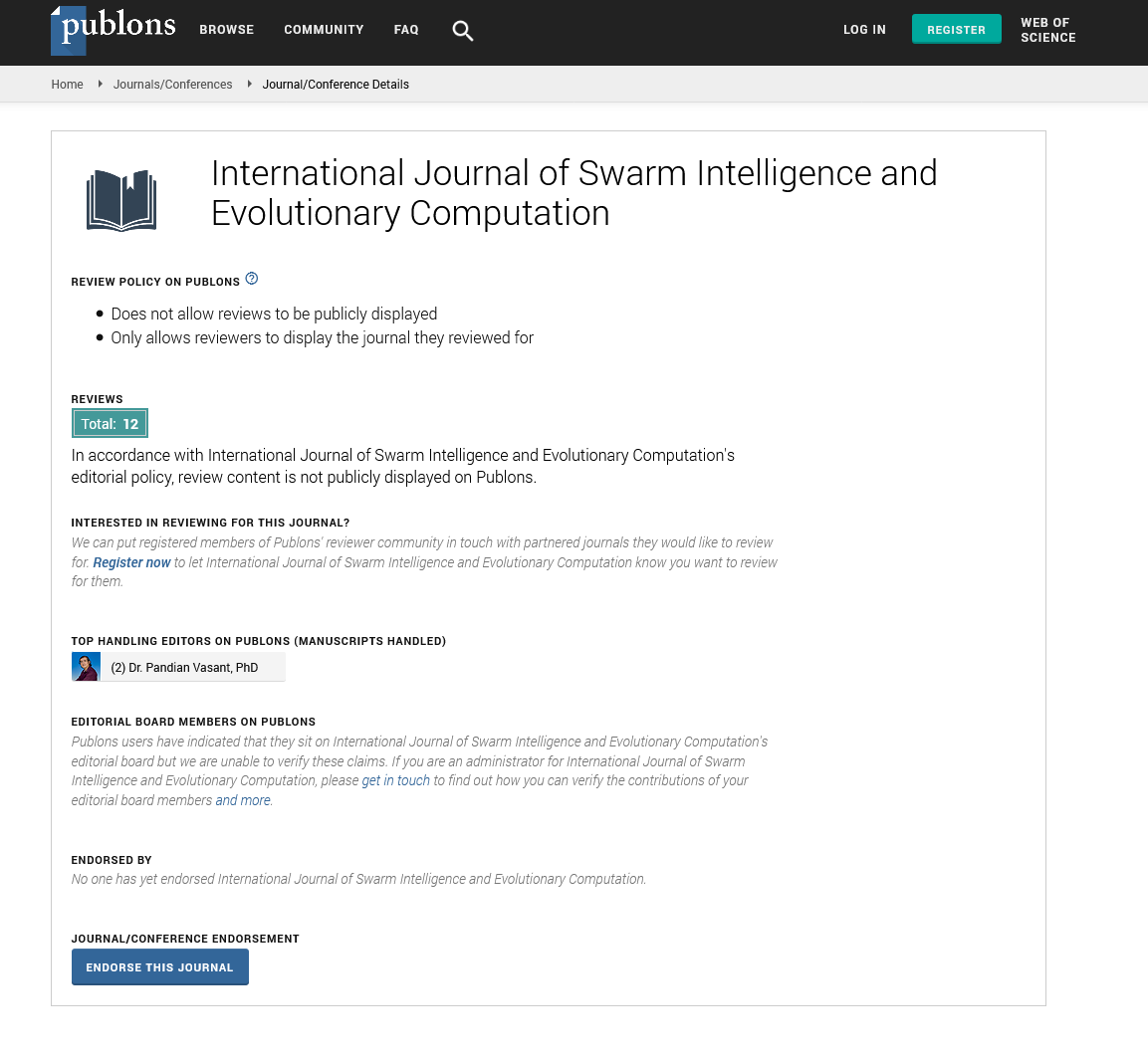Indexed In
- Genamics JournalSeek
- RefSeek
- Hamdard University
- EBSCO A-Z
- OCLC- WorldCat
- Publons
- Euro Pub
- Google Scholar
Useful Links
Share This Page
Journal Flyer

Open Access Journals
- Agri and Aquaculture
- Biochemistry
- Bioinformatics & Systems Biology
- Business & Management
- Chemistry
- Clinical Sciences
- Engineering
- Food & Nutrition
- General Science
- Genetics & Molecular Biology
- Immunology & Microbiology
- Medical Sciences
- Neuroscience & Psychology
- Nursing & Health Care
- Pharmaceutical Sciences
Commentary - (2022) Volume 11, Issue 9
Challenges of Machine Learning in Data Science and its Applications
Ivan Williams*Received: 17-Aug-2022, Manuscript No. SIEC-22-18413; Editor assigned: 19-Aug-2022, Pre QC No. SIEC-22-18413 (PQ); Reviewed: 05-Sep-2022, QC No. SIEC-22-18413; Revised: 13-Sep-2022, Manuscript No. SIEC-22-18413 (R); Published: 22-Sep-2022, DOI: 10.35248/2090-4908.22.11.273
Description
Machine learning in data science has transformed the landscape of industry. It has assisted businesses in making sound business judgments. However, it still faces a few problems that a data scientist must address. The following are the top three machine learning issues in data science:
Lack of training data
Any machine learning model is built around data. However, obtaining tagged data is extremely difficult and costly. Transfer learning is one technique for addressing this issue. It enables the model to apply knowledge from previously learnt tasks to new related activities. Another solution to this problem is selfsupervised learning. It provides a significant opportunity for better exploiting massive amounts of unlabeled data.
Discrepancies between data
The second issue is that there are usually some differences between training and production data. Sometimes a model performs well in a prototype environment but fails to generalize in real-world scenarios. For example, the model may perform well in one nation but fail in another owing to geographical variations; the model may perform well in winter but fail in summer due to seasonal differences; and the model may perform well on mobile but fail on desktop due to user differences, among other things. To remedy this issue, you must be extremely cautious when gathering training data.
Model scalability
This is one of the most significant difficulties that industries face. As a data scientist, you must ensure that your model is fast while simultaneously being lightweight. Post-training quantization is one answer to this problem. It is a conversion technique that decreases model size while improving CPU and hardware accelerator latency, with a slight decrease in model accuracy.
Applications
Real-time navigation
Google Maps is one of the most popular real-time navigation apps. But have you ever questioned why, despite being stuck in traffic; you are taking the shortest route. It is due to data obtained from those who are now using this service, as well as a database of past traffic statistics. Everyone who utilizes this service helps to improve the accuracy of this application. When you use the app, it constantly sends data back to Google, delivering information about the route taken and traffic patterns at any time of day. All of the information provided by the amount of people that use the application on a regular basis has provided Google with a massive database of traffic data, allowing Google Maps to not only track the traffic at that instance but also predicts what will happen if you continue in the same route.
Image recognition
Image recognition is one of the most prominent Machine Learning applications in Data science. Image recognition is used to recognize objects, people, and places. Face recognition in Smartphones, Automatic friends tagging suggestions on Facebook, and other popular applications use this programmes.
Product recommendation
Product recommendation is widely employed by e-commerce and entertainment companies such as Amazon, Netflix, and Hotstar. They employ various Machine Learning algorithms on your data to recommend products or services in which you might be interested.
Speech recognition
Speech Recognition is the process of converting spoken words into text. Text can be expressed in terms of words, syllables, subword units, or even characters. Some well-known examples include Siri, Google assistant, YouTube closed captioning, and so on.
Citation: Williams I (2022) Challenges of Machine Learning in Data Science and its Applications. Int J Swarm Evol Comput. 11:273.
Copyright: © 2022 Williams I. This is an open-access article distributed under the terms of the Creative Commons Attribution License, which permits unrestricted use, distribution, and reproduction in any medium, provided the original author and source are credited.


